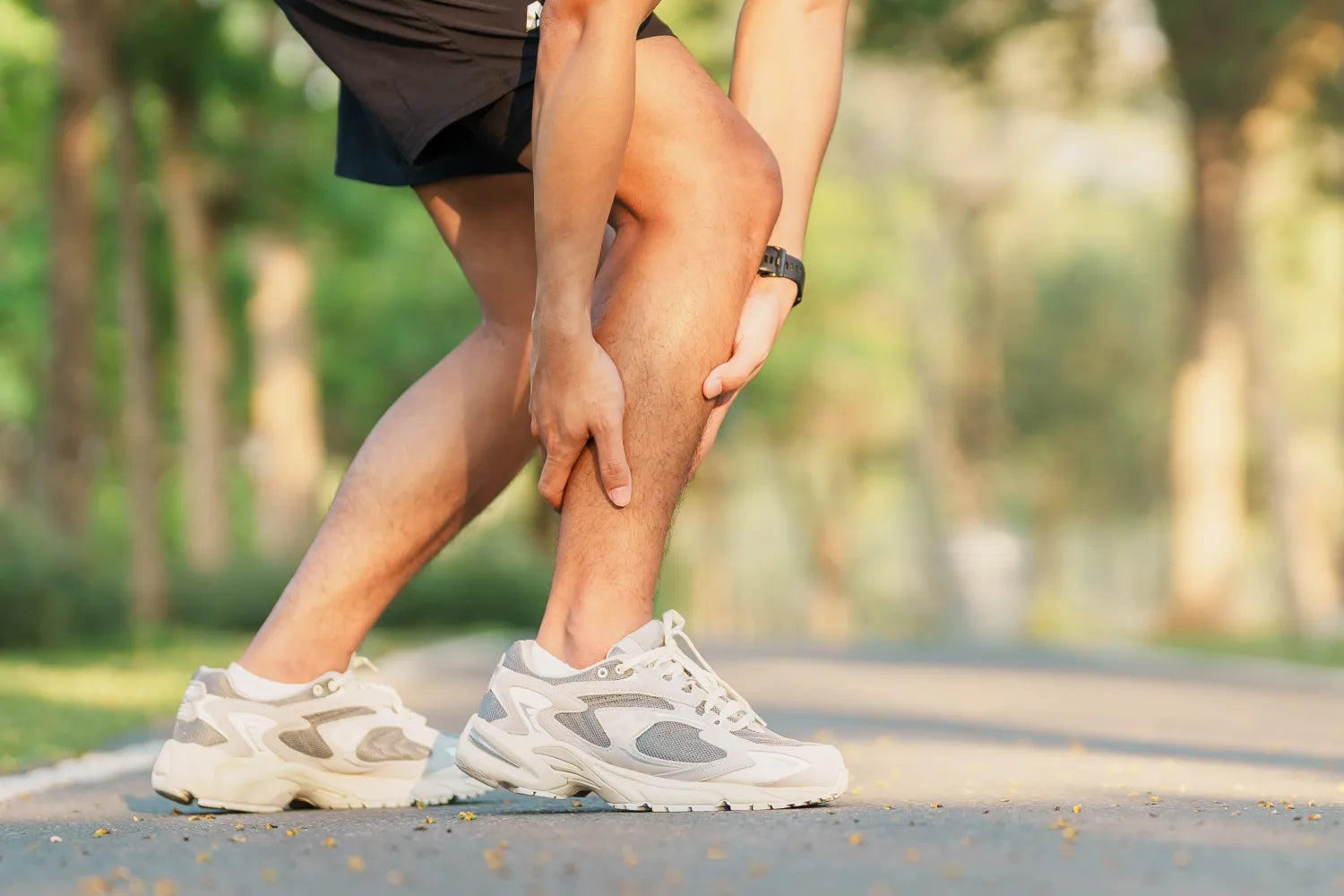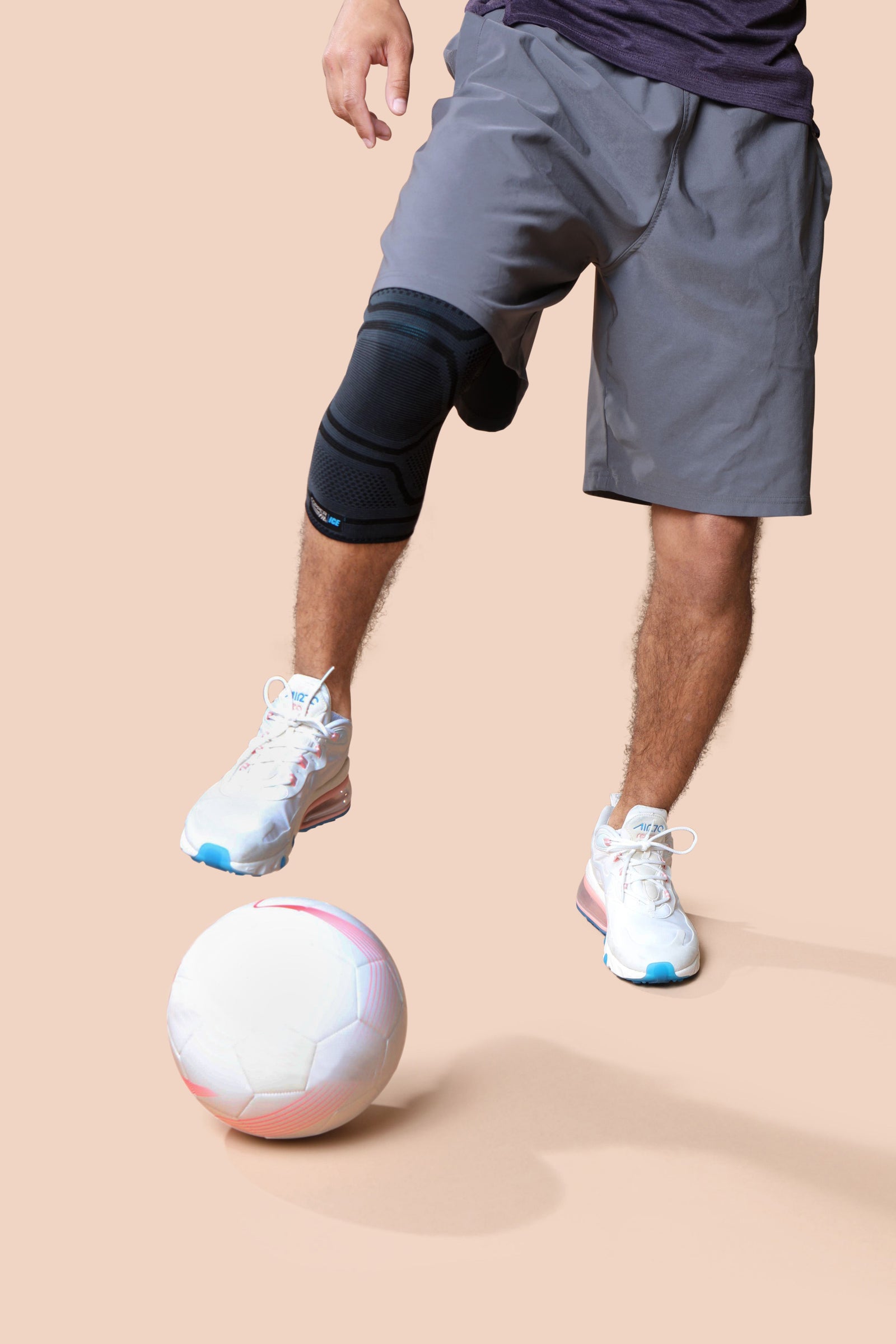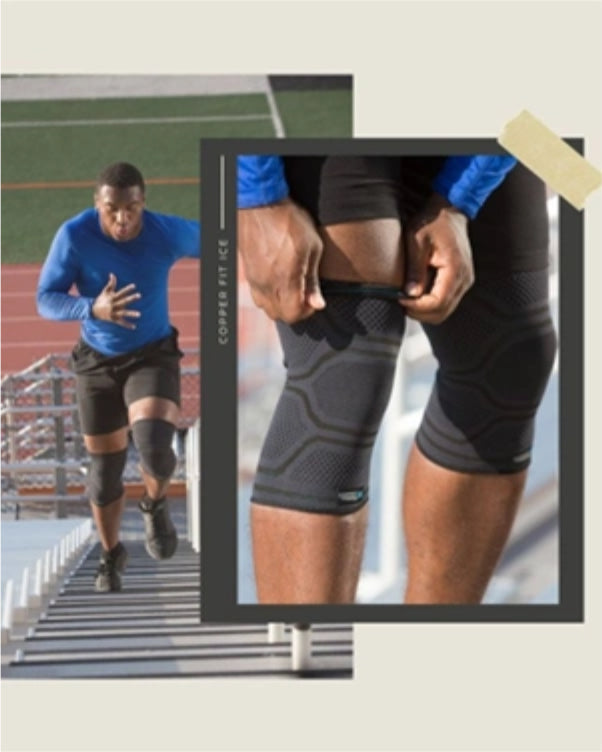
Key Takeaways
- Most pulled muscles heal within one to six weeks, depending on severity, care, and overall health.
- Supporting your body with rest, gentle movement, hydration, and recovery-focused routines makes a real difference.
- Preventing strains comes down to staying flexible, warming up properly, listening to your body, and incorporating supportive tools like compression gear.
Pulled muscles are something just about everyone deals with at some point, whether you're a longtime athlete, getting back into a fitness routine, or even just going about daily life. That sudden tightness, tenderness, or soreness can catch you off guard.
Once it happens, the first thing most people want to know is: How long is this going to take to heal? The good news is that most pulled muscles heal with time, care, and smart recovery. Understanding the healing process and how to support your body along the way can help you recover efficiently, get back to doing what you love, and prevent similar issues later.
Let’s walk through what a pulled muscle actually is, how long it takes to recover, and how to move forward with confidence and care.
What Is a Pulled Muscle?
A pulled muscle, also called a muscle strain, happens when muscle fibers are overstretched or torn. This usually occurs after sudden movements, overexertion, or using a muscle before it’s properly warmed up. Poor form, muscle fatigue, and tightness can also make you more vulnerable to strains.
Pulled muscles are most common in the legs (especially the hamstrings and calves), lower back, shoulders, and neck. But they can happen just about anywhere there’s muscle tissue.
Not all strains are the same.
Medical professionals typically break them down into three grades based on severity:
- Grade I (Mild):A small number of fibers are affected. You might feel tightness or slight soreness, but the muscle is still usable.
- Grade II (Moderate):More significant fiber tearing. You’ll likely experience more discomfort, weakness, and limited range of motion.
- Grade III (Severe):A complete or near-complete tear. This often results in major loss of function, visible bruising, and swelling. These cases typically require professional care and longer recovery times.
How Long Does a Pulled Muscle Take to Heal?
The recovery timeline depends heavily on how severe the strain is, what muscle is involved, and how well you support your body during the healing process.
Here's a general breakdown:
Grade I Muscle Strains
Recovery time: A few days to up to two weeks.
You might feel some discomfort during certain movements, but daily activities are usually still manageable. With proper rest, hydration, and gentle movement, the body often repairs these quickly.
Grade II Muscle Strains
Recovery time:Around two to six weeks.
These involve more muscle damage, which means longer recovery and more noticeable soreness and tension. Stretching or loading the muscle too soon can delay healing, so pacing yourself is key.
Grade III Muscle Strains
Recovery time: Eight to 12 weeks or more.
This kind of strain typically involves a full or partial tear and may require physical therapy, extended rest, and medical evaluation. Recovery here is all about consistency, patience, and giving the muscle what it needs to rebuild.
Keep in mind that healing isn’t always linear. Some days will feel better than others, and setbacks don’t always mean you’re doing something wrong. What matters most is giving your body the time and tools to do what it does best: recover.
What Factors Can Affect Recovery Time?
Everyone’s recovery timeline is unique, but a few key factors can make a big difference:
Rest and Movement
Total rest isn’t always the answer. Too little movement can slow down circulation and delay recovery, while too much too soon can aggravate the muscle. Finding the right balance—gentle movement, light stretching, or guided exercise—is important.
Circulation
Healthy blood flow delivers oxygen and nutrients to muscle tissue and helps flush out waste byproducts. Supportive movement, compression, and even certain therapies can help support this process.
Age and Baseline Fitness
Younger, well-conditioned muscles may bounce back faster. That said, older adults and those just getting back into movement can still recover well with the right support.
Hydration and Nutrition
Muscles need water and nutrients like protein, magnesium, and electrolytes to rebuild and function well. Skipping meals or staying dehydrated can slow you down.
Foods like salmon, eggs, leafy greens, bananas, and Greek yogurt provide essential nutrients that help fuel muscle repair and support nerve function. Lean proteins deliver the amino acids your body needs to rebuild muscle fibers, while magnesium and potassium-rich foods help ease tension and support recovery.
Sleep and Stress
Quality rest helps the body repair muscle tissue more efficiently. And since stress can increase physical tension in the body, managing stress plays a quiet but important role in recovery, too.
Tips for Supporting Early-Stage Recovery
The first few days after a strain are all about support and protection. What you do or avoid doing during this phase can set the tone for your entire recovery.
- Use cold therapy:This can help soothe tension in the affected area, especially if there's swelling or the injury is recent. Cold packs may help reduce excess fluid buildup and support the body’s natural healing response.
- Avoid heat at first:While heat can be helpful later on, using it too soon after a strain can increase blood flow too much and may aggravate discomfort.
- Gentle compression:Compression gear can help support circulation and soothe tension in the area. Light compression sleeves or wraps may offer structure without limiting mobility.
- Elevate the area when possible:Especially for strains in the legs, elevation can assist with fluid drainage and minimize swelling.
- Avoid deep stretching or overuse:Early-stage recovery isn’t the time to test your limits. Instead, focus on letting the muscle rest and stabilize.
Tips for Mid-to-Late Recovery: Easing Back In
Once the initial soreness and tightness start to ease, you can slowly and intentionally reintroduce movement and mobility exercises.
- Warm up before moving:Light walking, dynamic mobility drills, or low-impact activities can help get blood flowing before you load the muscle.
- Use heat therapy:During this phase of recovery, heat can help soothe tension and promote flexibility. Warm compresses or heated wraps may feel especially helpful before stretching or moving.
- Start rebuilding strength gently:bodyweight movements, resistance bands, or physical therapy-guided exercises can be a smart starting point. Focus on movement quality over intensity. Reintegrate your muscle into daily use without overloading it.
During this time, stay aware of signs of overuse, like sharp discomfort, prolonged soreness, or swelling. If these show up, ease back again and give the muscle more time.
How To Help Prevent Pulled Muscles
No one can avoid every strain, but smart habits go a long way in protecting your body. To limit the risk of injury, don’t skimp on the warm-up before workouts.
A few minutes of dynamic movement helps prepare your muscles for more intense effort. Regular stretching, mobility work, and proper cooldowns post-workout can also improve flexibility and reduce tightness that leads to strain.
Once you start your exercise, stay aware of your form. Poor mechanics can put extra strain on muscles and joints. If you’re unsure of proper form for any exercise, consider working with a trainer or coach.
It’s also important to take rest days and increase intensity gradually. Whether you're lifting, running, or doing high-rep workouts, give your muscles time to adapt.
Try incorporating active recovery days into your routine, and switch up the muscle groups you work at the gym throughout the week. And remember that recovery days help muscles repair, grow stronger, and stay resilient!
Wearing compression gear can also help keep your muscles feeling their best. Light compression during activity or recovery can support healthy blood flow and offer added structure to tired or vulnerable muscle groups.
FAQ
Should I stretch a pulled muscle?
Not right away. In the first few days, focus on rest and gentle movement. Once the soreness begins to ease, you can reintroduce light stretching gradually.
What helps a pulled muscle heal faster?
Rest, hydration, nutrient-rich food, light compression, and active recovery methods all support your body’s natural healing process.
How do I know if my muscle is pulled or torn?
Mild strains cause tightness and discomfort, but you can usually still use the muscle. A tear may come with a popping sound, bruising, or loss of function. If you're unsure, check in with a medical professional.
The Bottom Line
At Copper Fit, we know how frustrating it can be to deal with soreness or feel held back by muscle tension. We also know that your body is capable of incredible things when it’s given the right tools and support.
Whether you’re recovering from a pulled muscle or looking to prevent your next one, we believe in smart, supportive movement, and we’re here to help you stay in motion, every day.
Sources:
Muscle strains - Symptoms and causes | Mayo Clinic
It's all about blood flow! | University of Rochester





